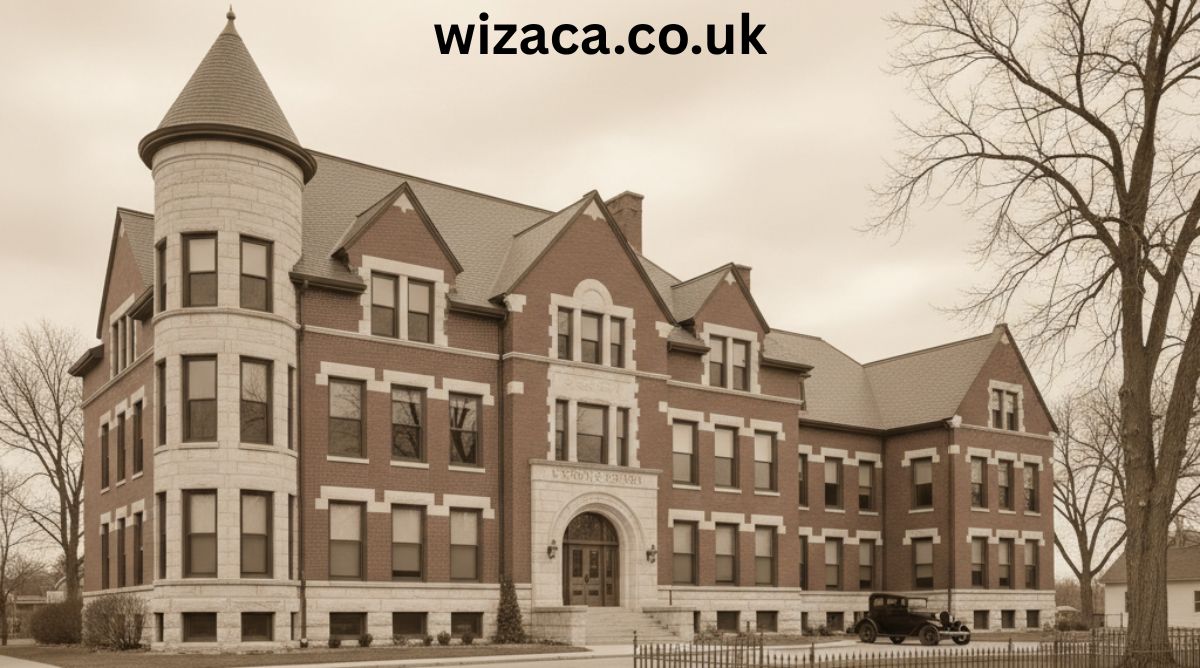The Yocom Hospital is one of the most historically significant landmarks in Chariton, Iowa, representing a time when small-town healthcare and community-driven medical innovation shaped rural America. Built in the early 20th century, this hospital became a symbol of dedication, local architecture, and service to the people of Lucas County.
This article explores the history of the Yocom Hospital building, the story of the Yocom family who founded it, and the architectural and cultural heritage it left behind.
Early Beginnings of Healthcare in Chariton
Before the establishment of Yocom Hospital, the city of Chariton, Iowa had limited medical facilities. In the late 19th century, most medical treatment was done through home visits by general practitioners. The development of hospitals in small American towns was still in its infancy.
Dr. Albert L. Yocom Sr., a physician from Newbern, Iowa, moved his practice to Chariton around 1889. He quickly became a well-known and respected doctor. His dedication to patient care inspired his son, Albert L. Yocom Jr., to follow in his footsteps. After completing his medical education, the younger Yocom joined his father’s practice.
The Yocom family saw the need for a modern healthcare facility that could serve Chariton and the surrounding communities. Their vision eventually led to the creation of a purpose-built hospital — what would become the famous Yocom Hospital.
Construction of the Yocom Hospital Building
The Yocom Hospital building was constructed around 1924, during a period of growth and modernization in the American Midwest. The building was designed by William L. Perkins, a prominent Iowa architect known for designing several important buildings in Chariton and other nearby towns.
Located at the corner of Braden Avenue and North 8th Street, the hospital occupied a quarter block of land near Chariton’s downtown square. Its proximity to the city center made it easily accessible for patients and families. The design reflected a blend of functionality and early 20th-century architectural elegance — a rectangular structure with symmetrical windows, brick façade, and landscaped surroundings.
The landscaping was an important part of the hospital’s concept. The Yocoms believed that a healing environment included nature, peace, and space for patients’ families. Gardens, small cottages, and open lawns surrounded the hospital, creating a calm and restorative atmosphere for everyone who entered.
The Role of Yocom Hospital in the Community
For nearly four decades, the Yocom Hospital served as the primary healthcare center for Chariton and much of Lucas County. It was not only a hospital but also a community hub — a place where generations of families were born, healed, and comforted.
The hospital offered general medicine, surgery, maternity care, and radiology services. Remarkably, it was among the first small-town hospitals in the region to feature deep-therapy X-ray equipment, a sign of its modernity and the Yocom family’s commitment to innovation in medicine.
The building also had attached living quarters for nurses and medical staff, emphasizing the personal and family-oriented nature of the institution. Many people in Chariton recall stories of local nurses and doctors living on-site, forming lifelong bonds with the community they served.
Architectural Features of Yocom Hospital
The Yocom Hospital was designed with practicality and elegance. Architect William L. Perkins paid attention to both efficiency and beauty — ensuring proper ventilation, large windows for natural light, and smooth internal circulation for patient flow.
👉 William L. Perkins – Wikipedia
Its brick construction reflected the sturdy architectural trends of the early 20th century in Iowa. The layout included a central reception hall, patient wards, an operating room, and private rooms. The basement often served multiple purposes — from laundry and storage to later hosting community programs when the hospital ceased operations.
The hospital grounds also featured small cottages that provided temporary lodging for family members visiting patients. This concept was rare at the time and reflected the Yocoms’ humane approach to healthcare — blending hospitality and medicine.
The Yocom Family and Their Legacy
The hospital’s founders, Dr. Albert L. Yocom Jr. and Jennie Curtis Yocom, played a central role in running the hospital. Dr. Yocom managed the medical side, while Jennie served as the administrator, ensuring smooth day-to-day operations. Their partnership represented an ideal mix of professionalism and compassion.
The Yocom family’s contribution went beyond medicine. They were active in Chariton’s civic life, supporting community events, local education, and charity programs. Their leadership inspired others to see healthcare as a shared community responsibility rather than just a business.
Their commitment left a lasting legacy in Chariton’s collective memory, making the Yocom Hospital a beloved institution long after its closure.
Transition and Closure
By the late 1950s, the building was aging, and healthcare standards were evolving rapidly. The community decided to construct a new, modern medical facility to meet growing demands. In 1961, the Lucas County Memorial Hospital (now known as the Lucas County Health Center) opened on the north side of Chariton, replacing the old Yocom facility.
After that, the Yocom building gradually ceased operating as a hospital. For a short time, it was used for community programs, offices, and early childhood education initiatives such as Head Start. However, by the late 1960s, it was vacated, and in subsequent years, it was demolished.
The hospital founders passed away not long after — Jennie Yocom and Dr. Albert Yocom Jr. both died in the late 1960s. Their passing marked the end of an era for Chariton’s first true hospital.
The Site Today
Today, the site where Yocom Hospital once stood has been transformed into Constitution Park and a public parking area. While the original building no longer exists, its memory lives on through local archives, photographs, and the stories of residents who were born or treated there.
The transformation of the site from a private medical facility into a public park symbolizes continuity in community use — from healing bodies to offering a space for relaxation and reflection. Visitors to Constitution Park can still sense the historic energy of the place that once cared for generations of Chariton families.
Architectural Heritage and Preservation
Although the Yocom Hospital building itself was demolished, its story remains a vital part of Chariton’s architectural heritage. The hospital’s architect, William L. Perkins, designed other notable structures in Chariton that are now preserved as part of the town’s historic district.
👉 Historic preservation – Wikipedia
These include the Hotel Charitone, which has been listed on the National Register of Historic Places and restored as a heritage landmark. This connection between the Yocom Hospital and Chariton’s architectural identity keeps the hospital’s spirit alive in the town’s built environment.
The Importance of Small-Town Hospitals
The history of the Yocom Hospital highlights how small-town hospitals once played a crucial role in American healthcare. They were not just medical facilities; they were social centers, employers, and places of community pride.
👉 History of medicine – Wikipedia
During the early to mid-20th century, small hospitals like Yocom filled the gap between home care and large urban hospitals. They provided accessible treatment close to home, particularly for rural populations who could not easily travel long distances for care.
Legacy and Memory
Though the Yocom Hospital building is gone, its impact continues. It represents:
- Medical innovation in early 20th-century rural Iowa.
- Community service led by the Yocom family.
- Architectural significance as part of Chariton’s development.
- Cultural memory for those who were born or treated there.
Residents of Chariton still share stories about the hospital, its friendly staff, and the kindness of Dr. and Mrs. Yocom. The memory of the hospital continues to be preserved through local history projects and online archives documenting Lucas County’s medical past.
Conclusion
The Yocom Hospital history of building Chariton Iowa is more than a story about bricks and mortar — it’s about the people who envisioned, built, and sustained it. From its beginnings as a family medical practice to its transformation into a full hospital, and finally its replacement and rebirth as a community park, Yocom Hospital’s legacy stands as a testament to service, innovation, and compassion.
It serves as a reminder of how local visionaries shaped rural healthcare long before corporate medicine existed — and how their impact continues to inspire the people of Chariton, Iowa today.






